Recently we received pictures from a visitor, who wanted our opinion on a very special teapot. Below in this post, you can see his full email.
Here's are two pictures:
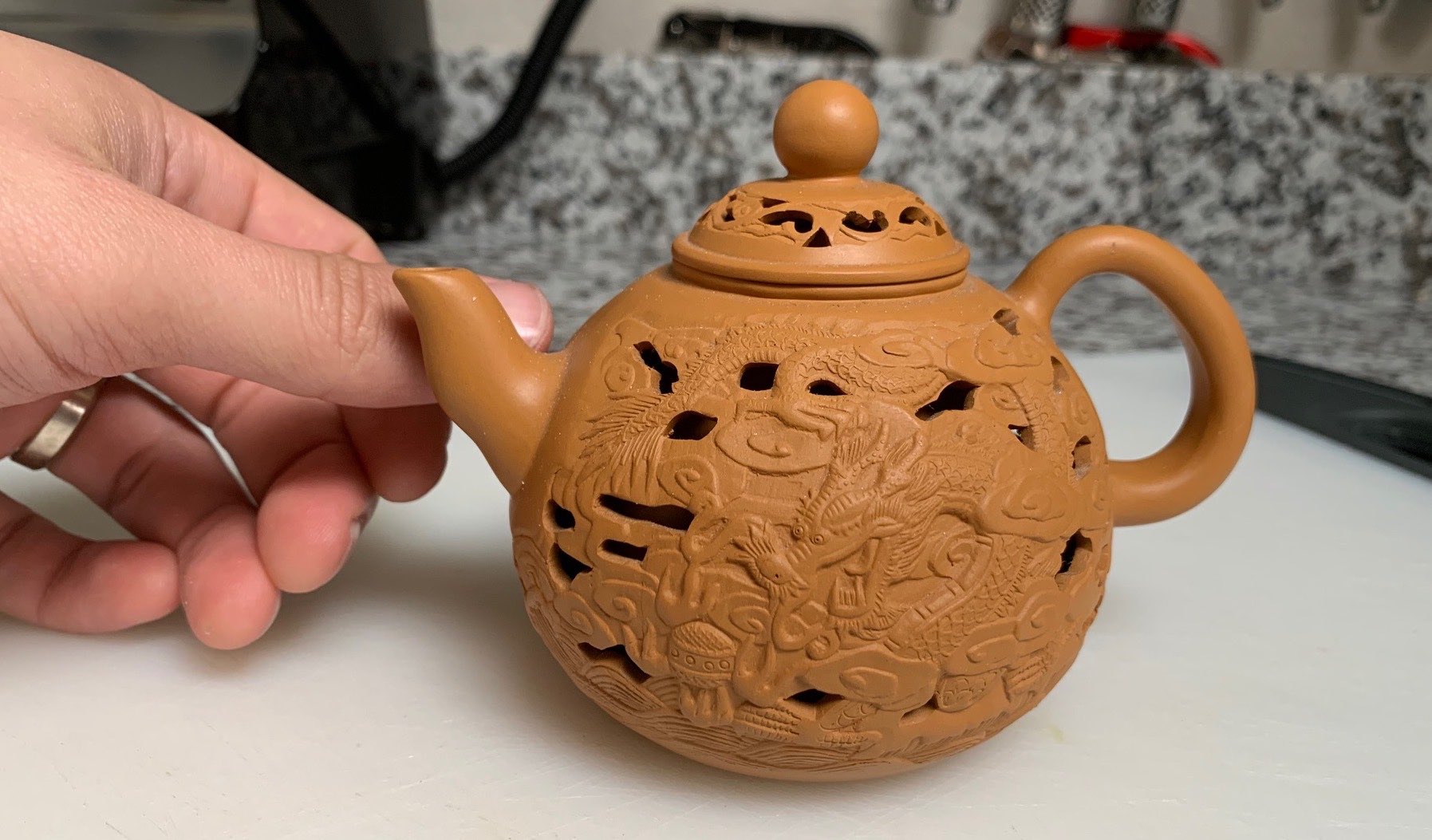
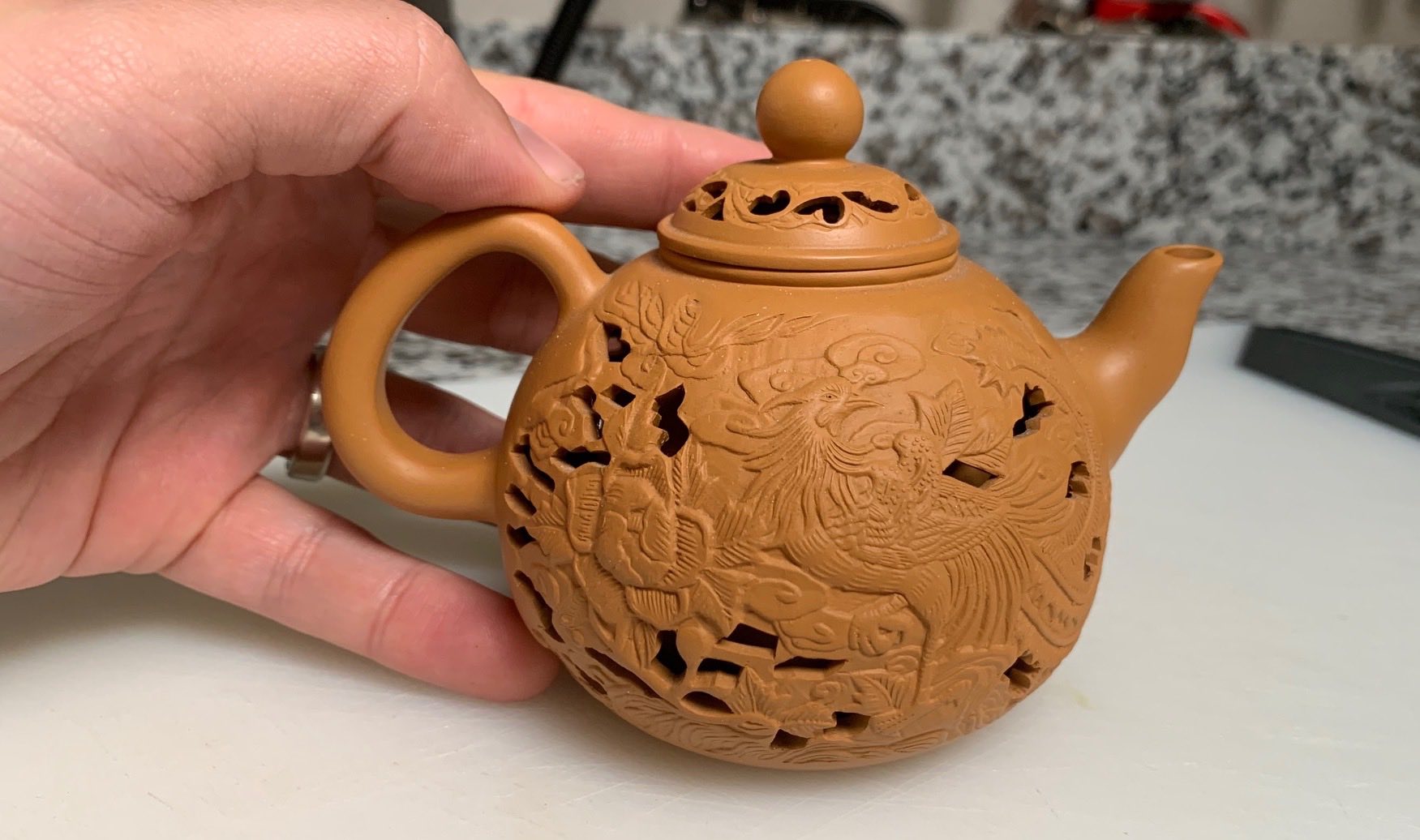
The first impression is that it is a very unique teapot with dragon and phoenix carvings. These two creatures often appear together in Chinese art such as paintings and porcelain. Phoenixs and Dragons are creatures that hold each other in balance. A phoenix is feminine while a dragon is masculine, like yin and yang.
What's also unique about the teapot is that it's a double layer teapot, allowing openings on the outside layer. You don't see such teapots often, and it kind of reminds us of Lucky Spheres/Balls made from multiple layers of Jade. We're sure that the artist who made it, got his/her inspiration from those balls.
So while the teapot shape definitely is not a classic Yixing shape, such as Shi Piao or Jing Lan, it's definitely unique. There's absolutely nothing wrong with unique and modern shapes. Nowadays artists are experimenting with new shapes in hope they become classic in the future. The choice of classic versus more modern creative shapes is like having either a taste for classic versus modern abstract paintings.
The clay
Our impression of the clay is that it appears to be too smooth to be real Yixing clay. It lacks this stony structure and it doesn't appear to be very porous. So most likely it's generic clay. We therefore do not expect much result in flavor absorption by the clay.
Is it unsafe? Most likely not, these teapots are still fired at high temperature, so if there's any unhealthy substances or impurities, it's most likely fixed inside the teapot. It's, however, important to clean the teapot well, and remove the loose parts inside. It's highly recommend to also season the teapot for first time use. This will definitely remove any odors and all loose parts.
Craftsmanship
The outside of the teapot appears to be made using a mold to get the dragon and phoenix patterns. The holes are then cut afterwards by hand.
When looking at the inside of the teapot it appears to be handmade, but it's somewhat sloppy. We do not see any marks of tools that are generally used for handmade teapot to make the inside more smooth. This may be hard due to the unusual inside shape. The layers also appear to be very thick. Fine Yixing teapots usually are more elegant and thinner.
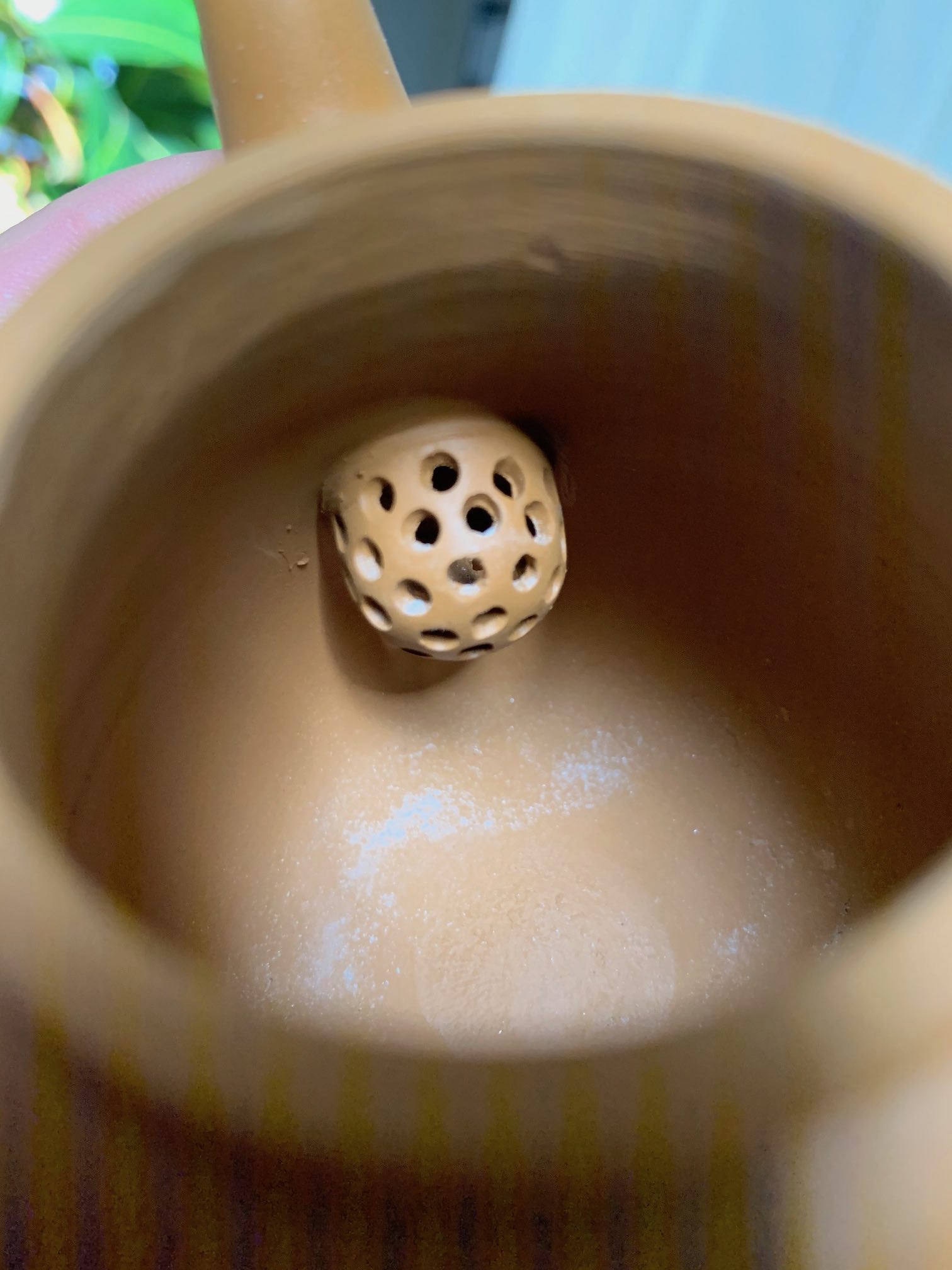
The filter surprisingly also appear to be handmade, but it's also a little sloppy. Normally this kind of filters are made using a mold (even for handmade teapots), which doesn't seem to be the case here.
Most likely, this teapot is made inside a larger workshop in which quantity and efficiency matters. To make this teapot perfectly would take many days (and would cost a lot), but we estimate that this teapot is handmade in less than an hour using a mold for the outside design.
Because we expect that many pieces will not appear successful after oven firing, it's not rational to use good clay. This would further support our view that the clay used is most likely not very high quality.
The bottom of the teapot has the stamp markings of the workshop. Most artists/workshops also stamp the inside of the teapot lid, which isn't the case for this teapot.
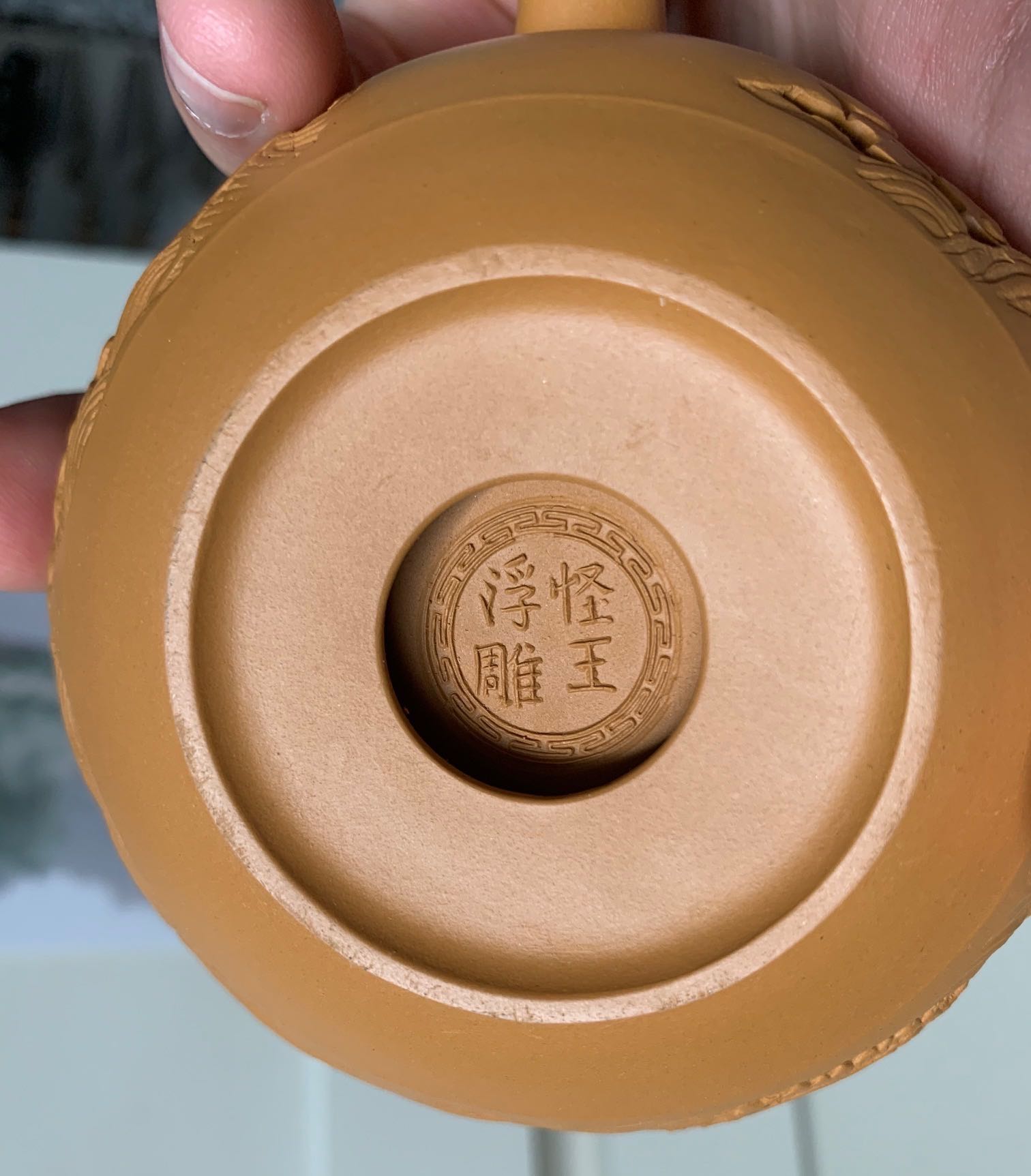
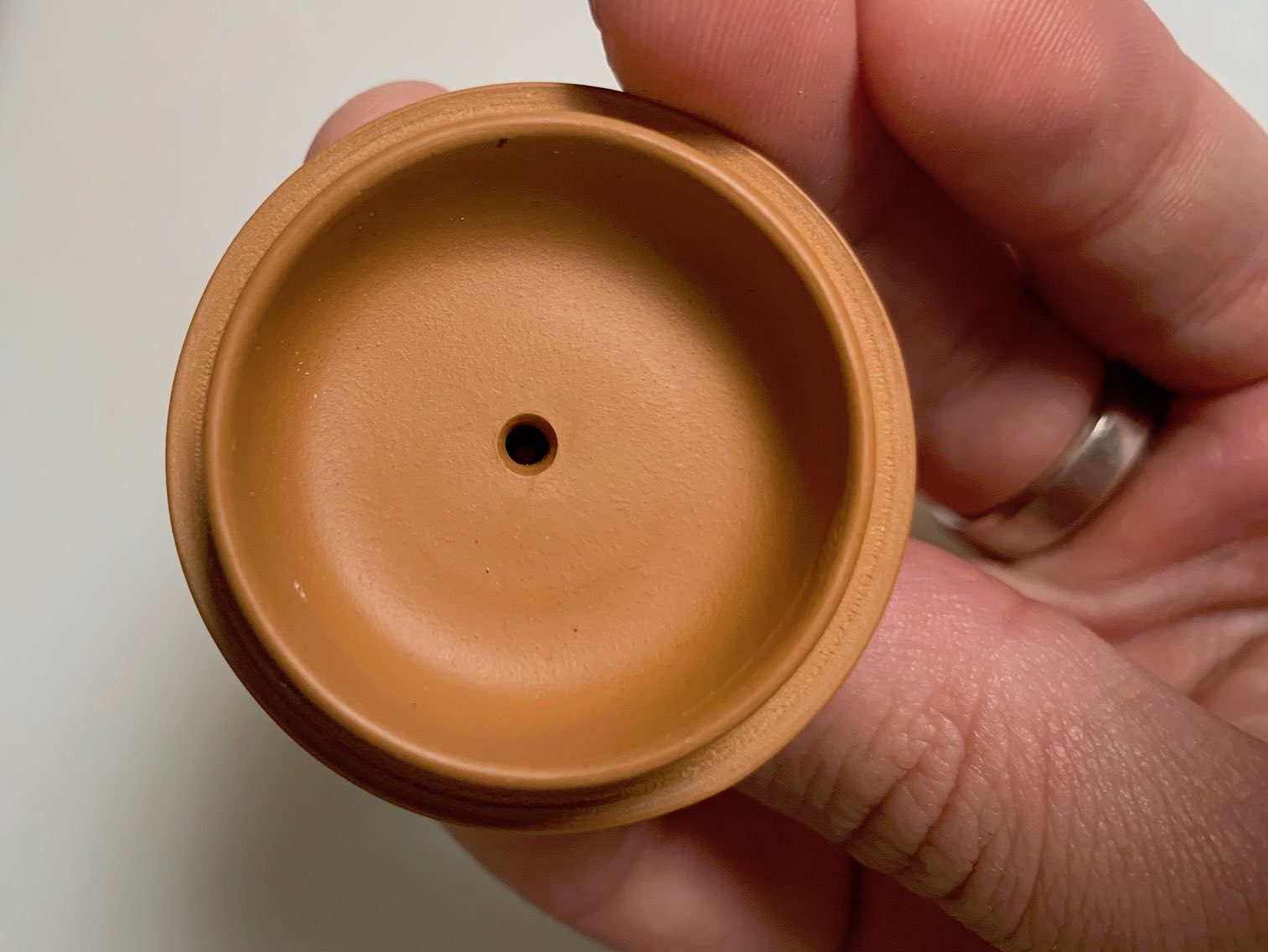
Is It Worth 90$?
This teapot was acquired for 90$. Is it worth it? That's a question that's hard to answer. Overal the clay appears to be generic, but the teapot is very unique and semi-handmade (though the finishing is somewhat sloppy and most likely a mold is used for the outside). So it can be worth 90$ to someone who simply loves the unique shape and design. The price seems also be reasonable given that it was acquired by a local store as the middle man and the artist also need to earn their fair margin. At last, there's also shipping costs involved.
If you compare it to our 90$ teapots, ours are fully handmade from original clay and more fine. However, the shape is classic and definitely not as exotic as this teapot.
Semi-handmade versus Handmade
Semi-handmade teapots in practice doesn't have to function less well compared to fully handmade pieces. In practice, however, we do see that handmade pieces are better tested, simply because so much more time has gone into it.
The same reasoning holds for the quality of the clay. In theory, you could use very high quality clay for a semi-handmade teapot. Yet, in practice it's more rational and logical for good clay to be used for finely made teapots that fetch higher prices on the market.
At last, for teapots that are very expensive, it's not just the use of clay that determines the prices, but also how well the craftsmanship is. Teapots made by artists with the highest level of certification also are generally more expensive. For example, this green dragon teapot was made by an artist of the highest degree characterized by premium clay and exquisite finishing.
Original mail
First of all, thank you so much for your help, I greatly appreciate it. You bring up some very interesting points about what 'authentic' may mean in the context of yixing. There are three main things that matter to me in the context of my teapot purchase- is this teapot actually made of yixing clay and did it come from the region? Are there yixing pots that bear this shape and style? My research doesn't indicate as such which is why I am concerned.
- will the pot absorb tea flavor over time and form the luster/patina - functioning as it is supposed to? If it is a mass-produced reproduction from another region might it contain dyes or impurities I need to worry about?
- is the price I paid ($90) reasonable for an anonymous possibly mass-produced or slip-casted piece provided it is made from the legitimate yixing clay.
I am somewhat bothered that my pot does not have the traditional yixing shapes and style - that is one of the main reasons I question its origins. There is also the price I paid which seems high for an anonymous piece - in comparison, on your site you have some pots that are $90 that have an artist certificate and are handmade. Your value pieces that I would assume are made from the zisha clay but are only semi-handmade and are $60 and under, which is great.
One more question - do the semi-handmade pieces function any less well than the fully handmade in terms of tea flavor absorption and the creation of the luster? It seems like at the high level the price is influenced by the piece becoming 'art' and not just merely serving as a tool - which don't get me wrong I am completely on board with.
I look forward to hearing your thoughts on the matter!